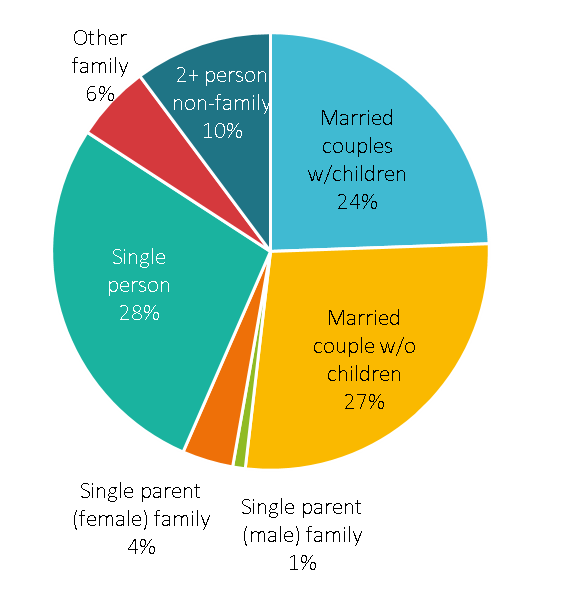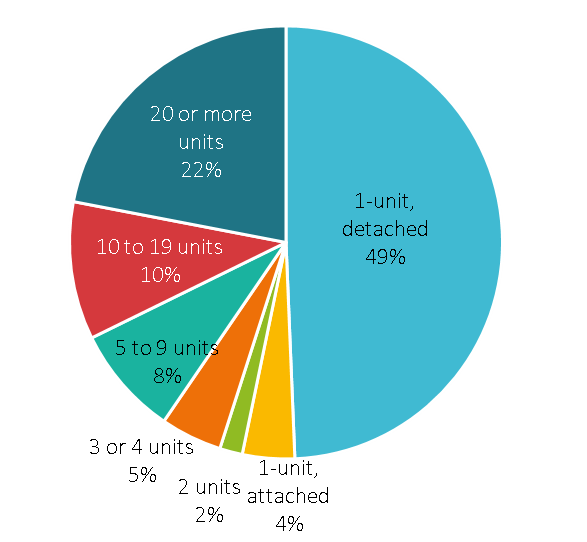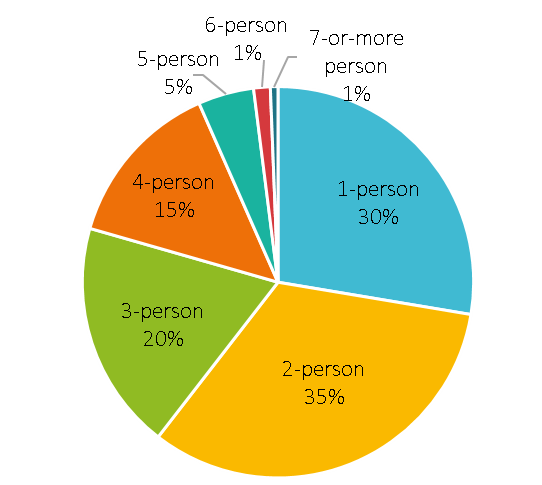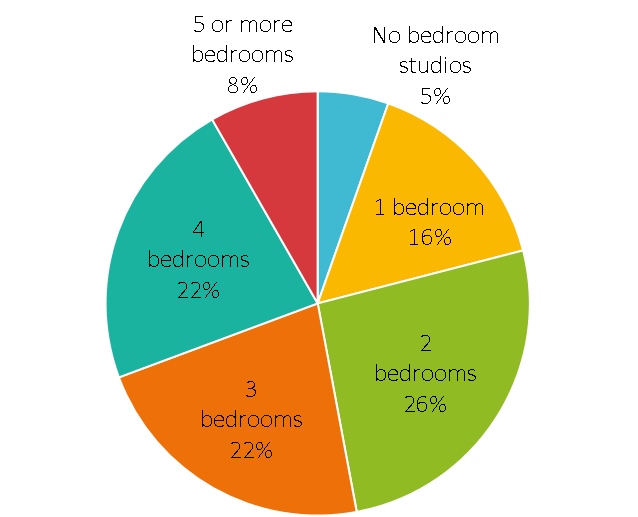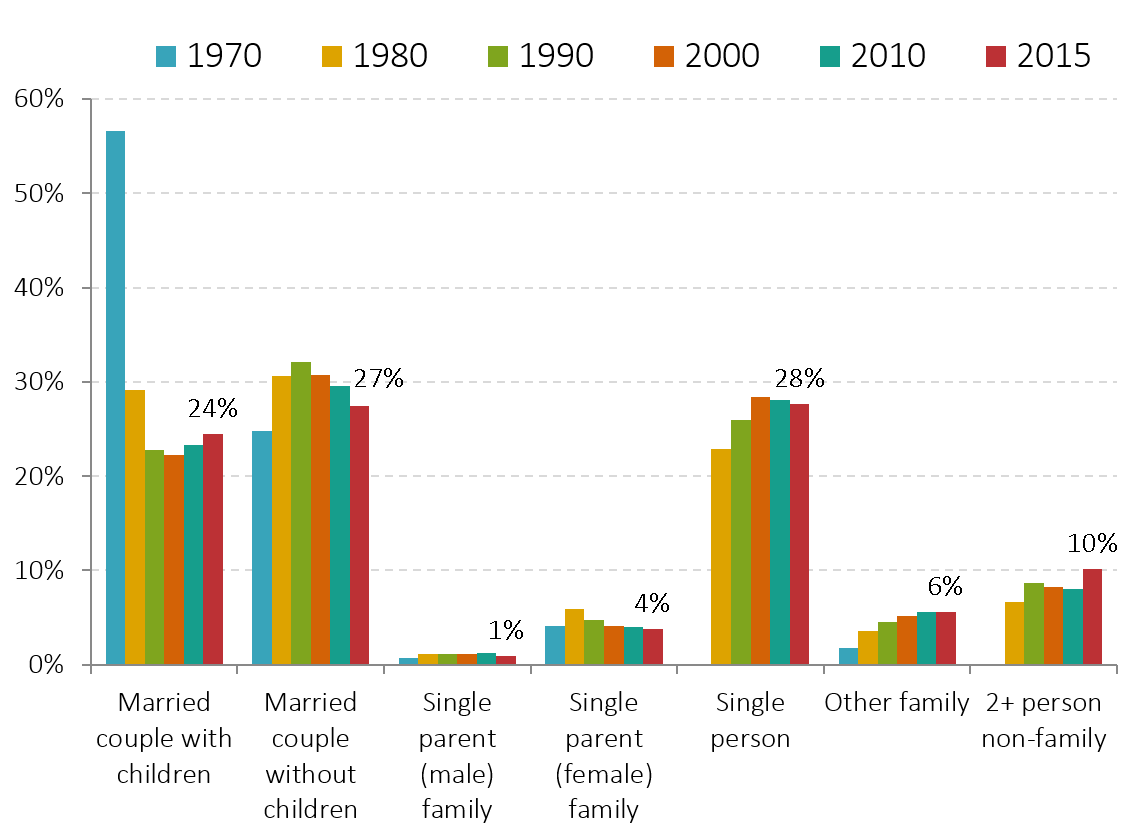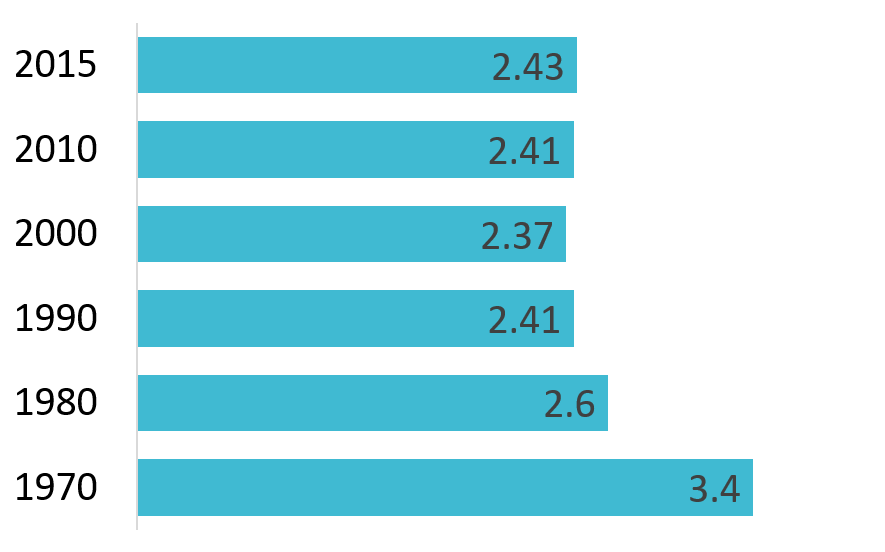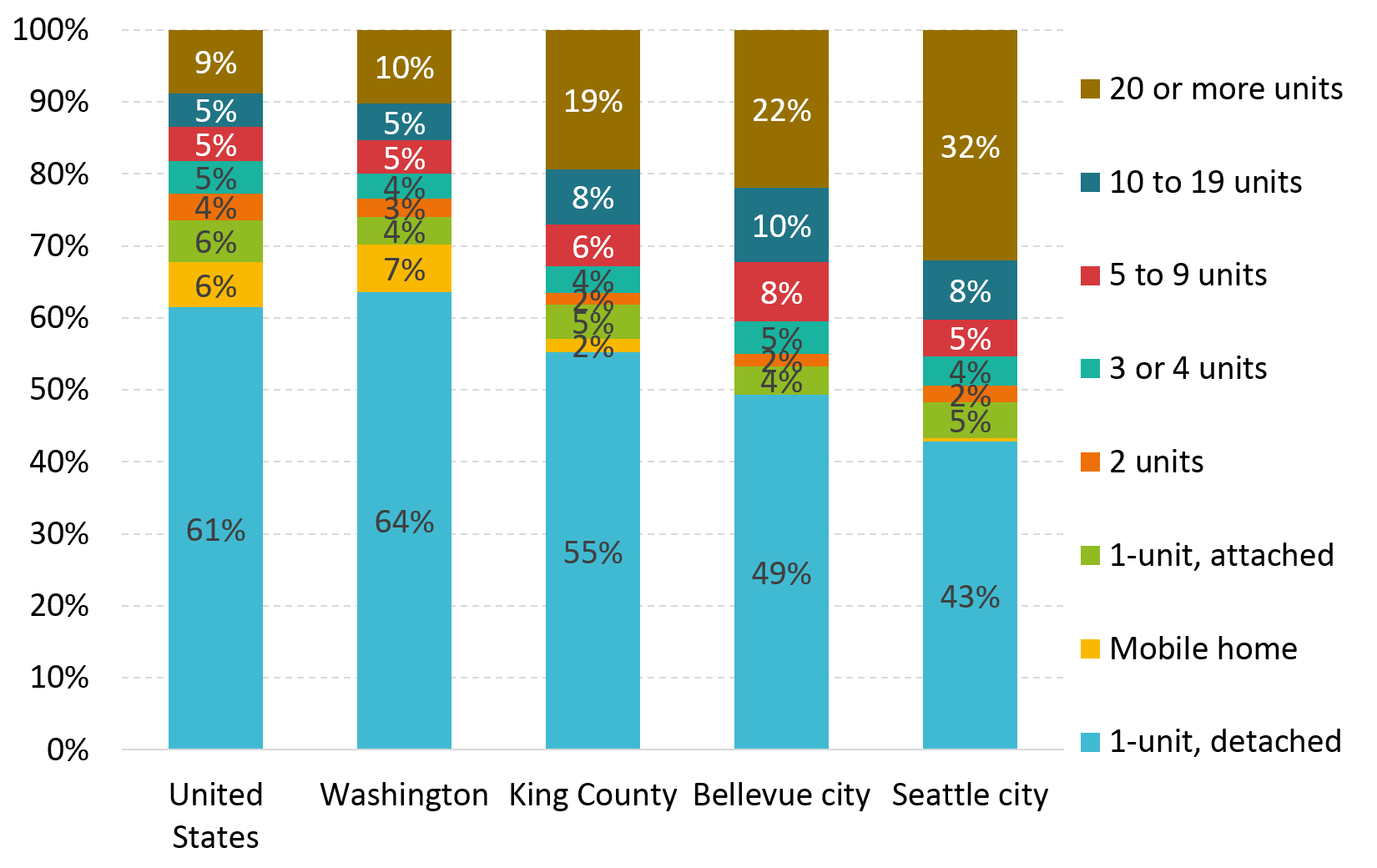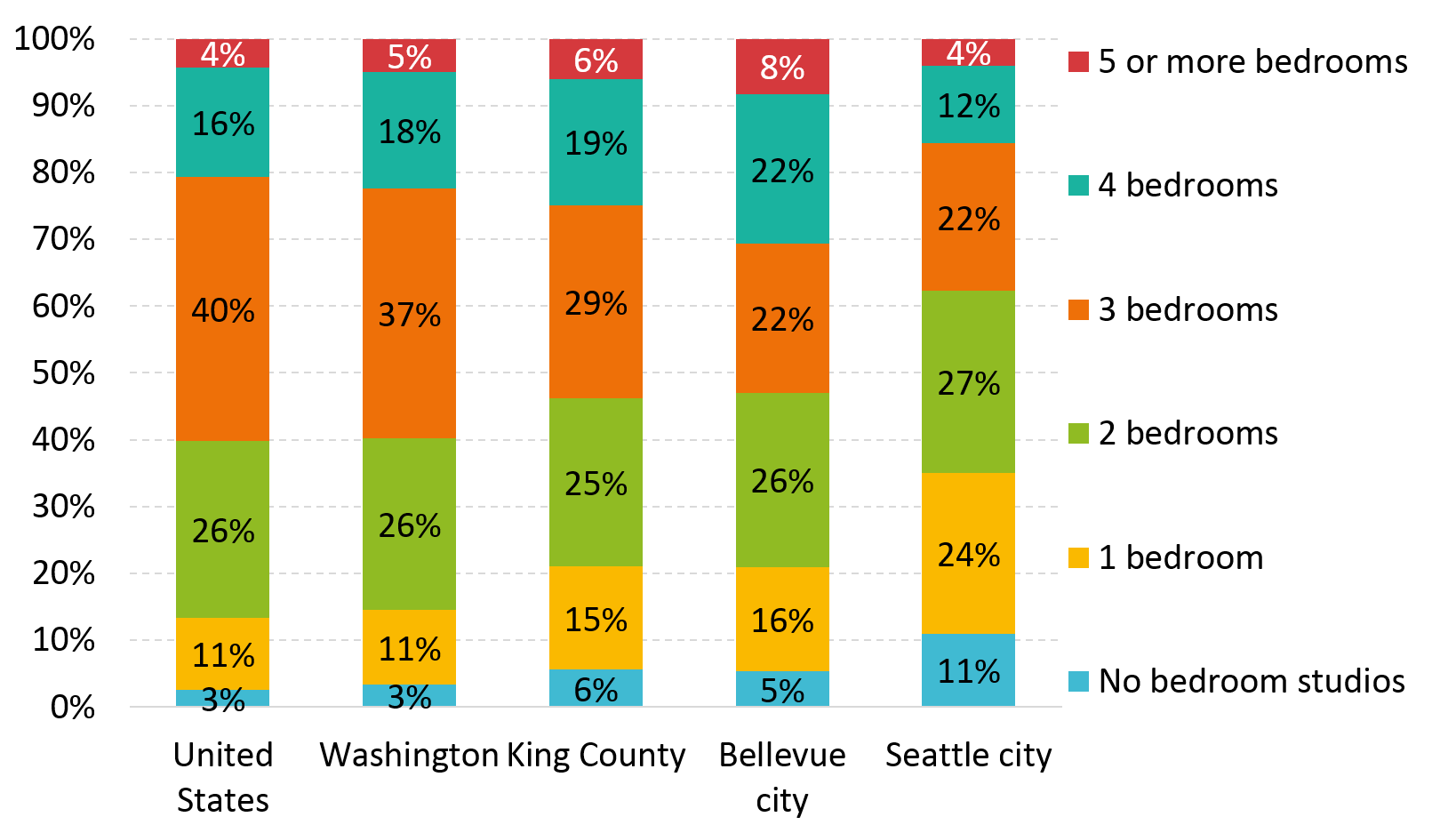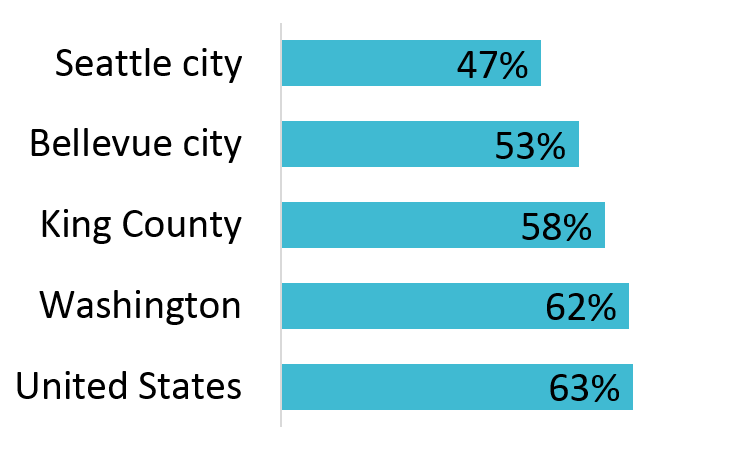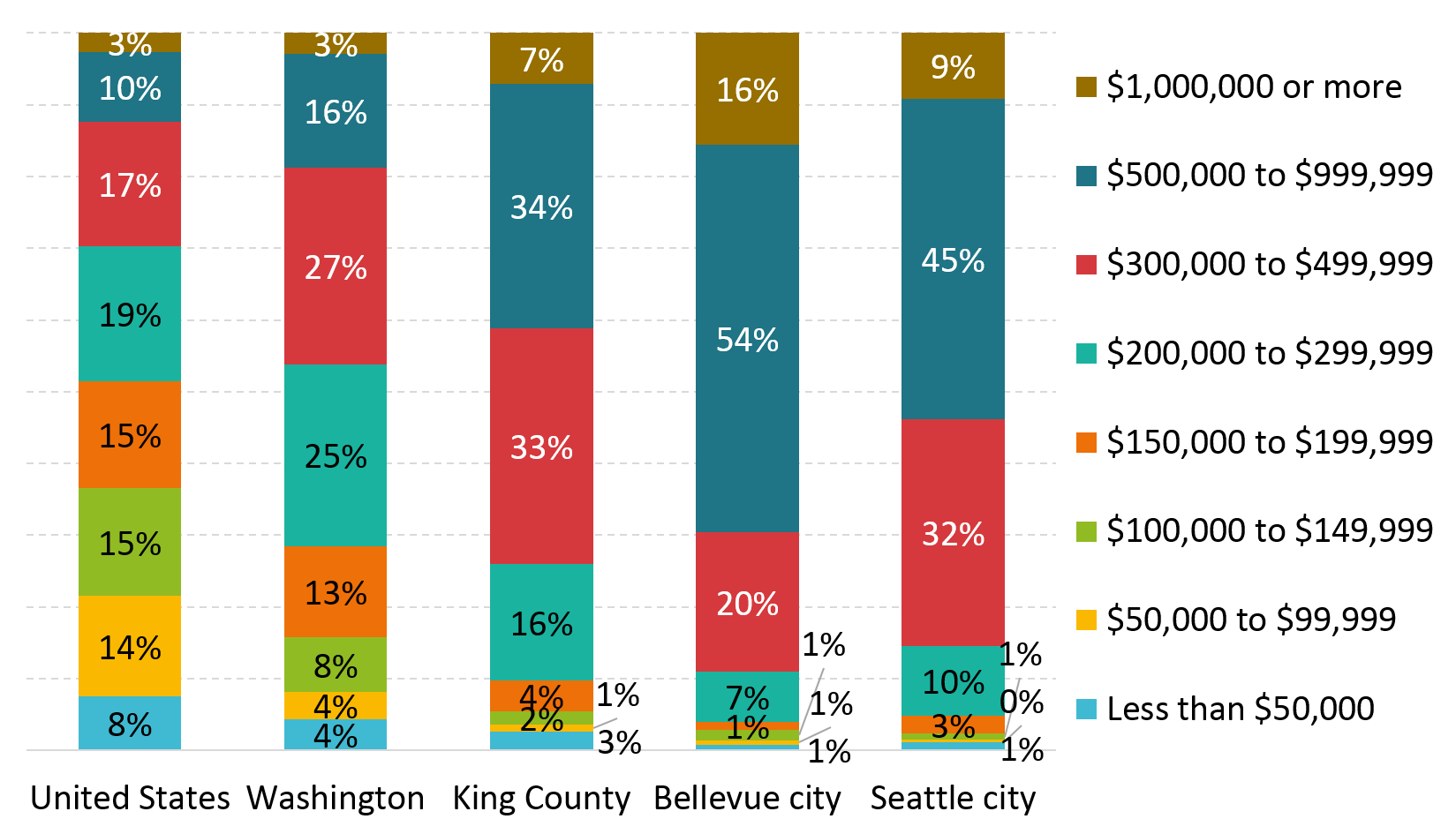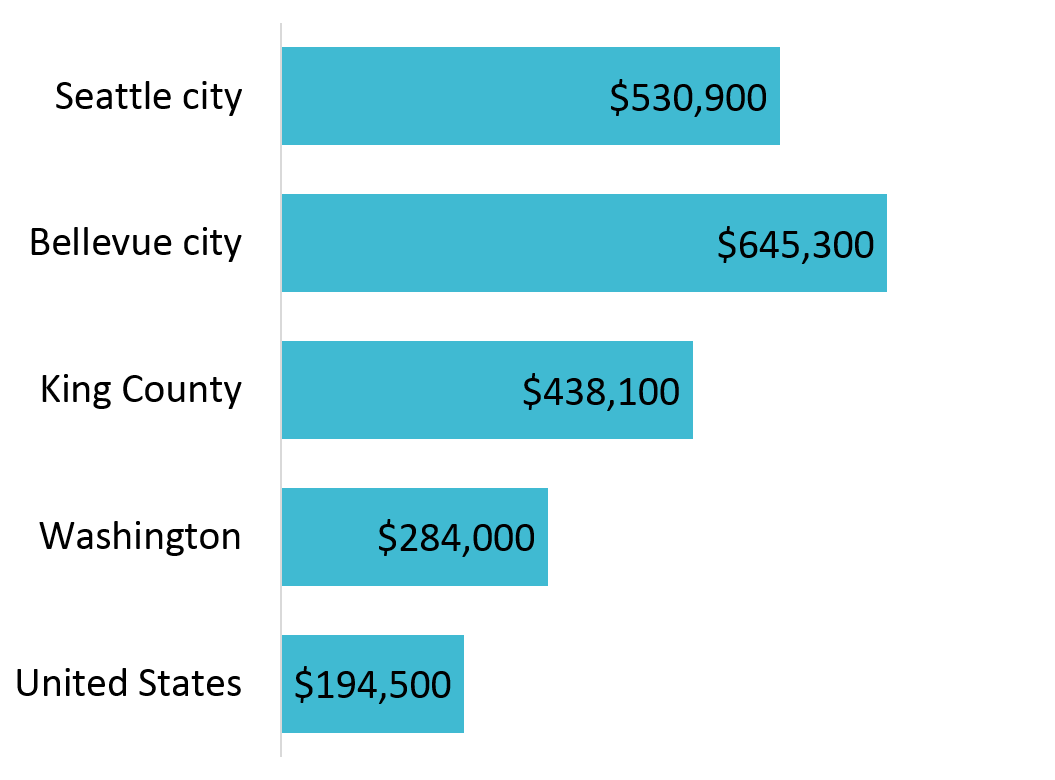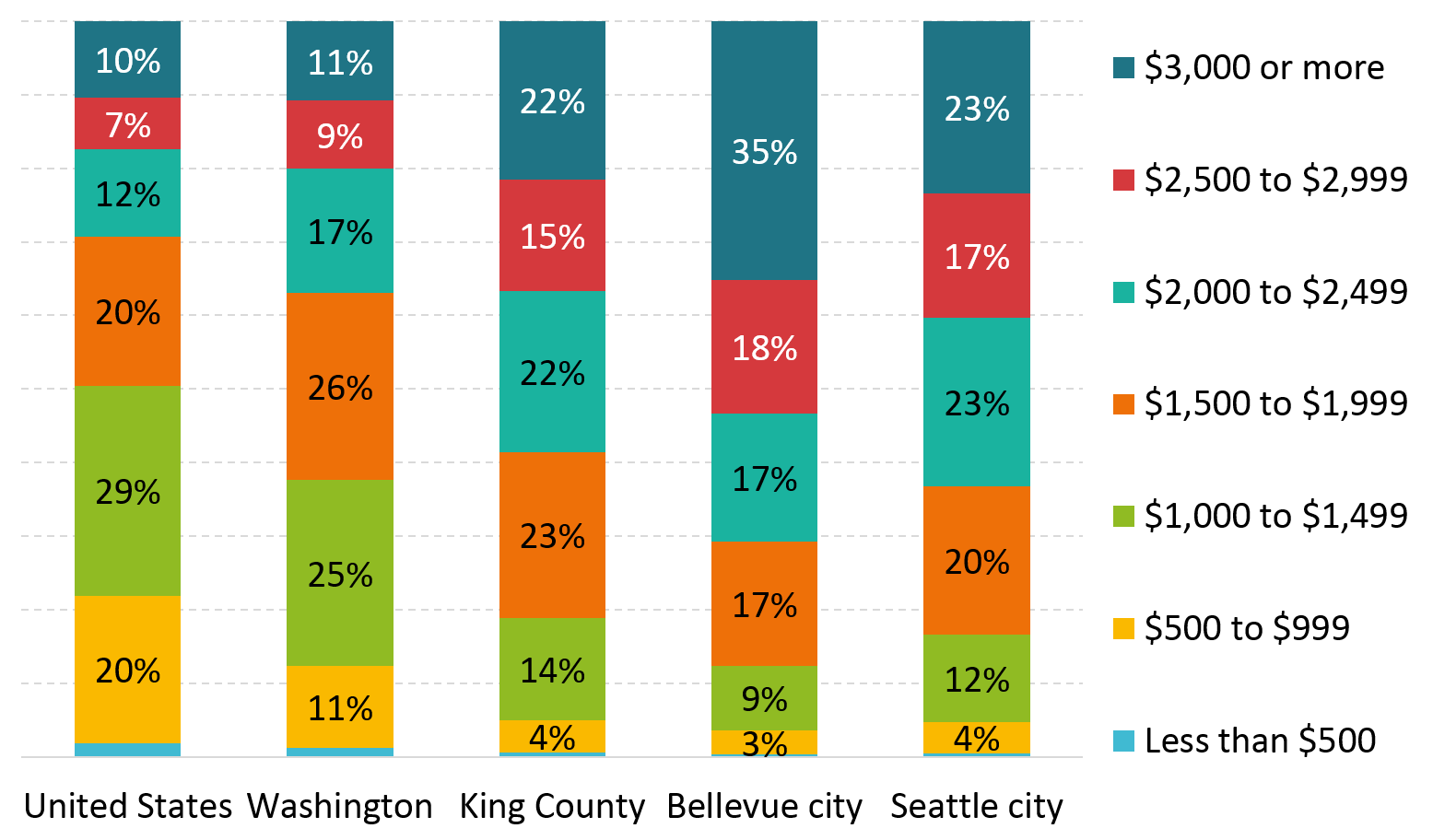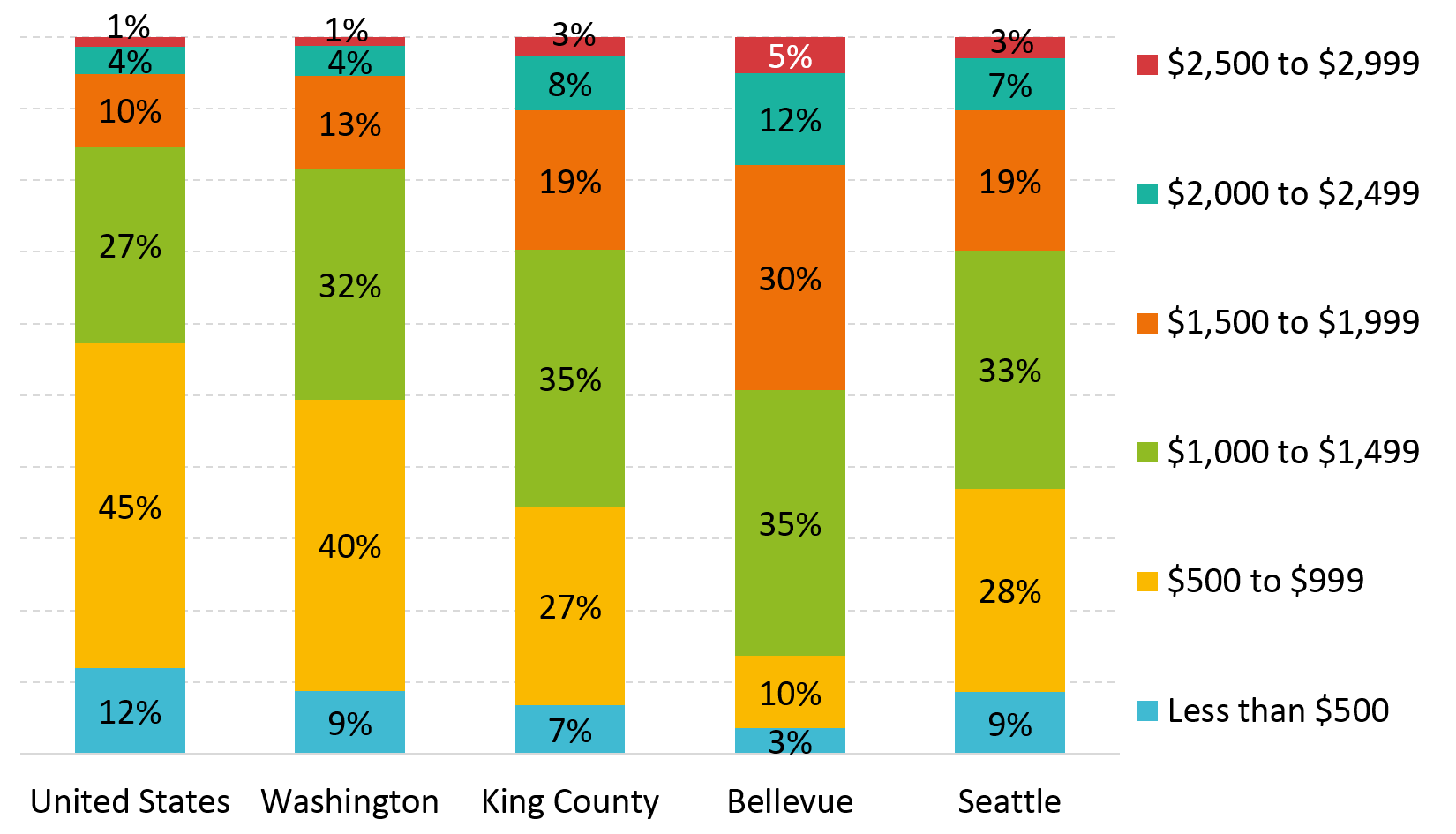
Existing Snapshot
Household Type
As of April 1, 2017, an estimated 58,293 households lived in Bellevue. Single person households comprised the largest share at 28 percent, followed by married couples without children at 27 percent and married couples with children at 24 percent. Two plus person non-family households comprised about ten percent of Bellevue’s households followed by other family households and lastly by single parent female families at four percent and single parent male families at about one percent.
Structure Type
An estimated 61,128 housing units housed Bellevue’s households, about 49 percent of which were in single family structures and 51 percent of which were in multi-family structures. Twenty-nine percent of units were in multi-family structures with less than 20 units, and 22 percent were in structures with 20 units or more.
Household Size
Bellevue’s households averaged about 2.43 persons per household in 2015 with about 30 percent of households being one person, 35 percent being two person households, 20 percent being 3-person households, 15 percent being 4-person households and five percent being five-person households. Six and seven plus person households comprised the remaining two percent of Bellevue’s households.
Structure Size
Housing units largely reflected household size with studios and one bedrooms units comprising 21 percent of Bellevue’s housing units, 2-bedroom units comprising 26 percent, 3 and 4-bedroom units comprising 22 percent each, and 5 or more bedroom units comprising the remaining eight percent of units.
Tenure
About 53 percent of Bellevue’s households owned their own home in 2015 and the remaining 47 percent rented. Owner households were larger on average than renter households containing 2.62 people per household on average compared to 2.22 people for renter households.
In 2015, nearly 55 percent of Bellevue’s households had moved into their units since 2010 with 12 percent having moved in in 2015. Another 23 percent had moved in during the 2000s, 11 percent in the 1990s, seven percent in the 1980s and six percent before 1980.
Housing Age
In 2015, Bellevue’s housing stock was of varied ages, although all but two percent had been built in 1950 or later. Housing built in the 1950s, the decade Bellevue was incorporated, represented about 11 percent of housing in 2015. In the 1960s and 1970s, Bellevue experienced its first building boom and those structures continued to comprise about 39 percent of the housing in 2015. Housing construction continued in the 1980s, 1990s and 2000s, but at a slower pace, such that housing built during those decades represented 16, 14 and 13 percent of the housing stock in 2015 respectively. Housing built since 2010 comprised another five percent of Bellevue’s housing in 2015.
Heating Fuel
Nearly 53 percent of households in Bellevue heated their homes using electricity in 2015 compared to 38 percent who heated their homes using gas and another nine percent who used some other fuel.
Housing Value
In 2015, over half of owner households reported the value of their housing unit fell between $500K and $1M. About 11 percent reported the value of their unit was less than $300K, and about 20 percent reported the value of their unit was between $300K and $500K. Another 16 percent reported the value of their housing unit was one million dollars or more.
Housing Cost and Affordability
In 2015, households with a mortgage were paying a median of $2,689 on housing a month and about 27 percent of these households were paying 30 percent or more of their incomes on housing. In comparison, homeowners without a mortgage had a median monthly housing cost of $800 and 13 percent were paying 30 percent or more of their incomes on housing. Median gross rent in Bellevue in 2015 was $1,693 and 37 percent of renters were paying 30 percent or more of their incomes on housing.
Trends and Projections
Household Growth
By 2035, 70,300 households are projected to be living within the city of Bellevue.
Household Type
Although single person households and married couples without children have comprised the largest portions of Bellevue’s households for the past four decades, their shares have been declining since 2000 while married couples with children has been on the rise comprising 24 percent of Bellevue’s households in 2015. Two plus person families also witnessed an increase in 2015 reaching ten percent.
Structure Type
As infill and redevelopment occurs in Bellevue, a greater diversity of structure types including single family detached, townhome, mid rise and high rise residences will exist. Bellevue is projected to have a total of 74,200 housing units in 2035.
Household Size
Average Household Size Trends, 1970-2015
From 1970 to 2000 Bellevue’s average household size decreased from 3.4 in 1970 to 2.37 in 2000. It then climbed back up to 2.41 in 2010, and in 2015 it was estimated to be 2.43. This reversal in average household size was unforeseen, yet it can be explained by growth in Bellevue’s foreign born population, who on average have a larger household size than Bellevue’s native born population.
Two thirds of Bellevue’s foreign born population fall between 25 and 55 years of age, an age range which has a higher likelihood of being married with children than other age brackets. Indeed, a higher proportion of Bellevue’s foreign born population is married and foreign born householders have a larger household size on average. Also, Asians who comprise Bellevue’s largest foreign born population, have a higher propensity to live in multi-family structures than Bellevue’s White population. Therefore despite the majority of Bellevue’s housing growth being in multi-family structures, Bellevue’s overall average household size has increased since 2000.
Tenure
Recently, much of Bellevue’s new housing construction has been in rental units. The percentage of households renting in Bellevue has therefore increased. However as the market changes, a greater demand for ownership housing may develop, and more ownership units may be constructed. Rental units will still be in high demand, especially as Bellevue’s college age population increases with the development of the Global Innovation Exchange and expansion of Bellevue College.
Housing Cost and Affordability
As job growth occurs in Bellevue, demand for housing will increase pushing prices higher. Strategies for increasing the supply of housing at all economic levels will help Bellevue meet demand and maintain affordability for all segments of the population.
Comparisons
Household Type
Bellevue had a higher proportion of married couples with children than the nation, state, county or city of Seattle and slightly lower percentages of single parent families in 2015.
Structure Type
Bellevue had a greater diversity of structure types than the nation, state and county, with over half of its housing stock being in structures with two or more units. However, compared to Seattle, Bellevue had a smaller proportion of structures with 20 or more units. It also had smaller proportions of townhomes, mobile homes and duplexes compared to the nation.
Household Size
The size distribution of Bellevue's households is very similar to that of the nation's, with one person households representing 28 percent of all households, two person households representing another third, three person households representing 19 percent, four person households 14 percent and 5 or more person households representing the remaining seven percent. Seattle in comparison has a larger proportions of single and two person households at 38 and 37 percent respectively.
Structure Size
Bellevue has a relatively even distribution of structures with zero to five or more bedrooms compared to the nation, state and county. In comparison to Seattle, Bellevue has larger proportions of structures with four and five or more bedrooms and smaller proportions of structures with one or no bedrooms.
Tenure
Bellevue had a lower percentage of households who owned their own home in 2015 at 53 percent compared to the nation, state, and county, which had home ownership rates of 63, 62 and 58 percent respectively. Yet, Bellevue had a higher homeowner rate than Seattle at 47 percent.
Housing Value
Bellevue had the smallest share of owner occupied housing with an estimated value less than $500k at 30 percent compared to 87 percent of housing in the nation, 81 percent in the state, 59 percent in the county and 46 percent in Seattle. Bellevue's median housing value was more than three times the value of the nation's median.
Housing Cost and Affordability
During 2011-2015, Bellevue had the highest monthly housing costs for homeowners without a mortgage, homeowners with a mortgage and renters compared to the nation, state, county and Seattle.
Monthly Housing Cost Distribution for Homeowners without a Mortgage
Data Sources
Data on population come from two main sources: the United States Census Bureau and Washington State’s Office of Financial Management.
The U.S. Census Bureau’s decennial censuses, which take a 100 percent count of the population every decade, provide the anchor points from which estimates are generated for following years (post censal estimates). Once two anchor points exist, the Office of Financial Management creates a new set of annual estimates called intercensal estimates to yield a more consistent series. OFM’s postcensal estimates represent Bellevue’s official population estimates as they determine the level of state funding allocated to the City.
The U.S. Census Bureau also provides population and housing estimates each year along with demographic components of change by age, sex, race, and Hispanic Origin for the nation as part of their population estimates program.
